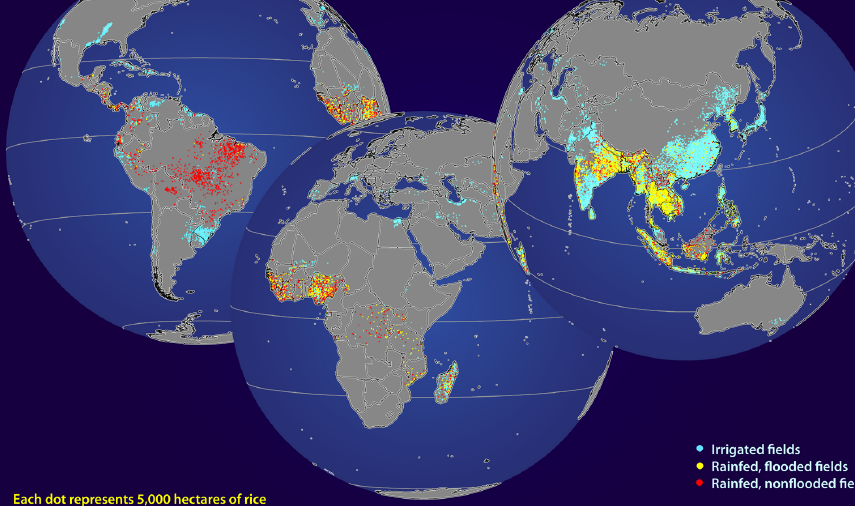You know, these Nibbles (the short, soundbite-type things which appear at the top of the right sidebar of this page) are fun to do, but sometimes you end up downplaying, or over-simplifying, an important, interesting — and interestingly complex — story. Take what I said about the American chestnut a few days ago. The recent history of Castanea dentata is proud and tragic 1, and efforts to bring it back from the brink of annihilation well-nigh heroic. To imply, as I did, that these efforts were confined to hybridizing the American with the Chinese chestnut was justified only by the necessity for extreme brevity. In fact, of course, it is not just hybridization but repeated back-crossing. And not just interspecific crossing but also painstaking crossing among the few remaining pure American chestnuts, as reported in the article that prompted me to revisit the original story and hopefully make amends for my earlier flippancy.
Cows get relief
Boffins to breed belch-less fodder. Al Gore unavailable for comment.
The geography of rice

Robert Hijmans has a great new global map of rice cultivation out. Robert is at IRRI now, hence his current preoccupation with rice, but he’s done the same thing for several other crops, and of course there are his cool cartograms too. I guess it is his map that underlies the figures of the potential impact of climate change.
Of course, this is a snapshot. How cultivation of a crop changes over time is difficult to capture in a single image, but there’s a map which does a pretty good job for maize.
Up a gum tree
Eucalypts decoded and hybridized.
Long-crowing chicken origins
You may have noticed a neat new feature on the blog. There’s a “Show on map” link after some of the latest postings which whisks you off to a pointer to the geographic location of the story. Jeremy will say a bit more about how he did it and why later on. I bring it up now because it was the reason why I stumbled on an interesting paper.
You remember that video of the long-crowing chicken from a few days back? Well, how do you geo-tag that? Where does the weird creature come from? The caption on MySapceTV says that it is a pure-bred Totenko cockerel. If you google that, one of the things you get pointed to is a DNA study that suggests that this and a couple of other long-crowers were bred on Okinawa from fighting cocks from southern China or Indochina. Want to see exactly where Okinawa is? Click below…